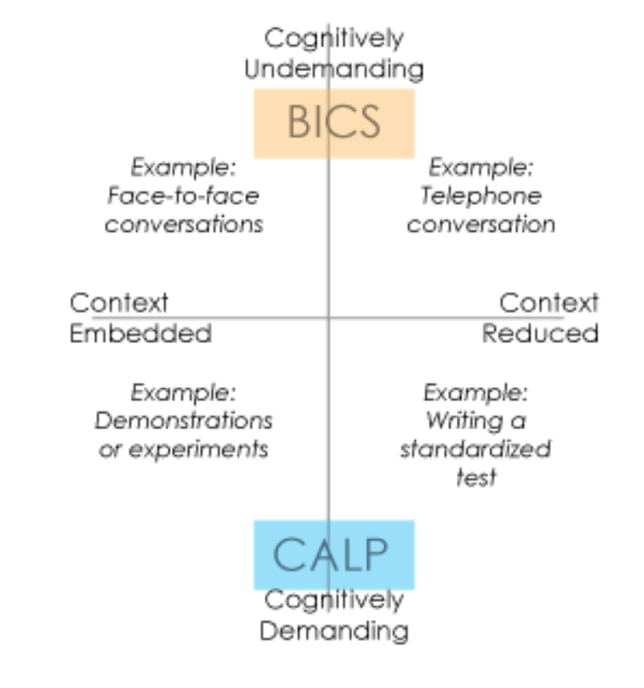16th, Nov 2022
Principal Michael Thomas Coffey
International School Principal-CIS Shenyang
Current ideas behind learning English
CISS’ curriculum is based on the New Brunswick curriculum and the PYP and MYP frameworks. This much is self-evident. But can students learn English to university undergraduate level in a 2 years time-frame? If a child can speak English can they function in classroom environments effectively? This article aims to answer those questions.
The idea of BICS and CALP is still relevant today. BICS (Basic Interpersonal Communicative Skills) describes the development of conversational fluency in the student’s second or subsequent language, whereas CALP (Cognitive Academic Language Proficiency) describes the use of that target language in decontextualised academic situations, especially in the Middle Years and higher. It is commonplace to find students who speaks conversational English but cannot function well in the classroom. Why? Let’s explore these kinds of English in more detail.
BICS English is context-embedded and CALP English context-reduced. It may take learners 2-3 years to learn BICS English, and a further 5-7 years to learn CALP English. This corresponds with when babies first speak: at age 2 or 3 and when children are able to ascertain truth for themselves: around age 9. Here are some examples of both kinds of English:

This is why in a classroom context it is so important teachers use: objects, props, manipulatives, pictures, graphs, charts and audio tracks. It helps second language learners make more meaning from the spoken or written world. It provides students with more context to make the new language more immediately meaningful. When students interact with each other, they get further interpersonal clues and construct yet more meaning from the target text.
Context-reduced language is more abstract and the context is usually known only to the author and reader. Examples include textbooks, a novel, a lecture, exam-type questions. Concepts feature often in this kind of language and new language learners will find themselves lost without more context to guide them to make sense of these texts.
Very few students unable to even speak English may arrive at an international school in Grade 10 and then pass university entrance exams in English to a high level. But some students can, and I would put this figure possibly at less than 2%. More students can make some sense of classroom environments if adjusted for the needs of learners transitioning from BICS to CALP. They will need to learn the specific vocabulary of IB command terms, key and related concepts, global contexts, ATLs and the language of subject criteria. Without mastery of this language their capacity to learn in an IB environment will be limited.
This is the main thinking behind the CISS BML/EAL (Bilingual-Multilingual Learners / English as an Additional Language) Proficiency Standards K-12 used by the AKD group of international schools in its policy (attached). WIDA has a scoring system of 1-6; MYP has Phases 1-6. These are not coincidences. Students should increase their English level by one WIDA point a year minimum, and sometimes two or three points. MYP phases similarly, a one phase level promotion per year is expected from each IB student. Students at Phase 6 are often directly incorporated into mother tongue courses (studies of the target culture through language and literature). Students with WIDA scores of 5 and above are exempt from compulsory EAL at CISS.
When an applying student is asked to reach a WIDA score of 3.6 by 1 May of Grade 5 this means something. The student is being given from 1 to 5 years to reach a grade-norm level of English before taking university entrance exams for Canadian, UK, or Australian universities, for example. A Grade 10 student with a WIDA score of 1.x stands little chance of being able to get good results in an English-language entrance examination to university.
What are the takeaways from this? In MYP students need to bring at least some English with them to leverage the classroom learning going on. English learning takes 7 years for a student to get to norm-referenced levels of competence. Learning about learning (metacognitive learning) in English takes students to the next level by making them autonomous learners who enjoy IB approaches to learning and answering their own questions.
List of References
Baker, C. (2006). Foundations of bilingual education and bilingualism (4th Edition). Clevedon, England, Buffalo, N.Y.: Multilingual Matters.
AKD Group CISS BML/EAL policy 2022-08-21
https://secure1.nbed.nb.ca/sites/ASD-S/Communication/BICS%20and%20CALP.pdf?Mobile=1&Source=%2Fsites%2FASD%2DS%2F%5Flayouts%2Fmobile%2Fview%2Easpx%3FList%3D1b09dc75%252D06e4%252D4630%252D9cfd%252D357ec28ebdcb%26View%3D770fe4cc%252Db005%252D497f%252Db2d4%252D20b1d84d90bb%26CurrentPage%3D1
https://worldenglishes.lmc.gatech.edu/bics-calp/
BML/EAL support
CISS is an English language instruction school, which means all of our subjects are taught in English. The one exception is Chinese, which includes acquisition as well as mother language for our 3-year-old to Middle School students.
Chinese classes in Elementary are streamed in order to provide mother language speakers a more rigorous Chinese environment.
From Grades 6 – 10, the Chinese Language and Literature course is available for mother language Chinese speakers.
German and French tuition are offered to families wishing to develop their child’s competence in these languages. This is open to students of all ages.
As part of our application process, all applicants will complete an English evaluation to assess the applicant’s reading, writing, listening and speaking skills against grade-level expectations.
Students are therefore supported in these four languages in their time at CISS. The additional English as an Additional Language (EAL) program starts in Grade 1. This may be compulsory if the WIDA test score requires it or optional if the family wishes to choose it.
WIDA assessments place the student on a scale of Level 1 (Beginner) to Level 6 (Fluent). Minimum English language proficiency levels are required for some grades:
BML/EAL Proficiency Standards K-12
- Nursery to Grade 4 – no minimal overall level required
- Grade 5 – 3.6 with min. Level 3 in reading & writing (needed by end of the year to advance to Middle High)
- Grade 6 – minimum overall Level 3.6 by May 1st of Grade 6
- Grade 7 – minimum overall Level 4.0 by May 1st of Grade 7, with a minimum of 3.5 in both reading and writing components
- Grade 8 – minimum overall Level 4.6 by May 1st of Grade 8, with a minimum of 4 in both reading and writing components
- Grade 9 – WIDA overall score of 5.0, with a minimum score of 4.5 in reading and writing components by May 1st of Grade 9
- Grade 10 to 12 – minimum overall Level 5
Michael Thomas Coffey
21 August 2022



